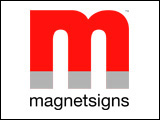The Manitoba Livestock Manure Management Initiative suggests the use of portable frac tanks offers potential to dramatically expand the range of manure nutrient applications.
In Manitoba, swine manure is typically applied using a drag line, which provides a continuous supply from the storage to the injection equipment.
MLMMI executive director John Carney says, while drag lines are a cost effective environmentally friendly means of applying manure, their range is limited but a portable frac tank can dramatically expand that range.
Essentially what these are is temporary storage tanks for manure.
During land application of manure there’s a surge tank that you can temporarily hold manure in.
That enables the applicator to use cost effective tanker trucks to move significant volumes of manure from the farm that produces it to the cropland that needs the nutrients and have a storage tank where the manure can be staged as the injection equipment is applying it to the fields.
In terms of how it would help the industry, it would be of specific interest in the southeast where we are redistributing nutrients to cropland that requires it.
A dragline will allow you to go 3 or 4 miles but with this equipment you could use a tanker truck to transport the manure 10 to 15 miles and then use this frac tank as a surge tank to hold the manure such that the custom applicator could have a continuous supply of manure as he’s using his drag line on the cropland.
Carney stresses the agricultural use of a frac tank would be completely different than its use in the oil and gas industry.
He says, in agriculture, it would be used as a portable manure reservoir and wouldn’t change the way nutrients are injected into the soil.



